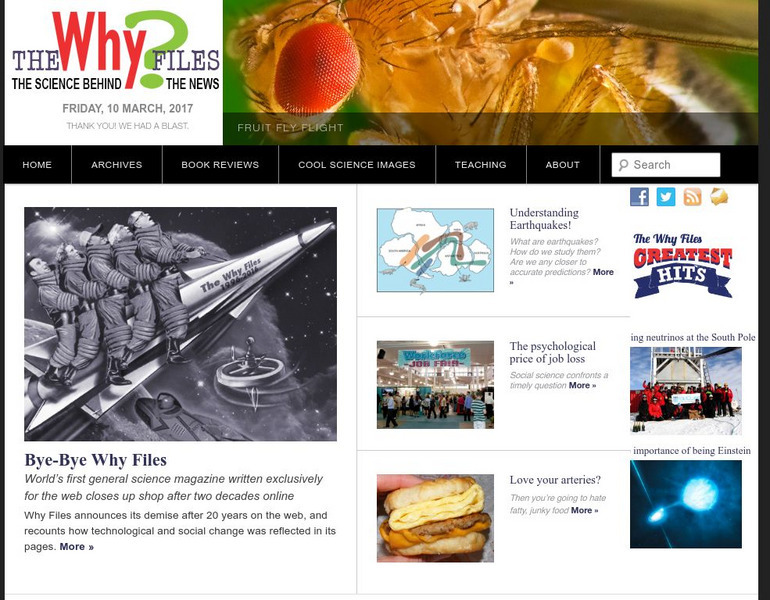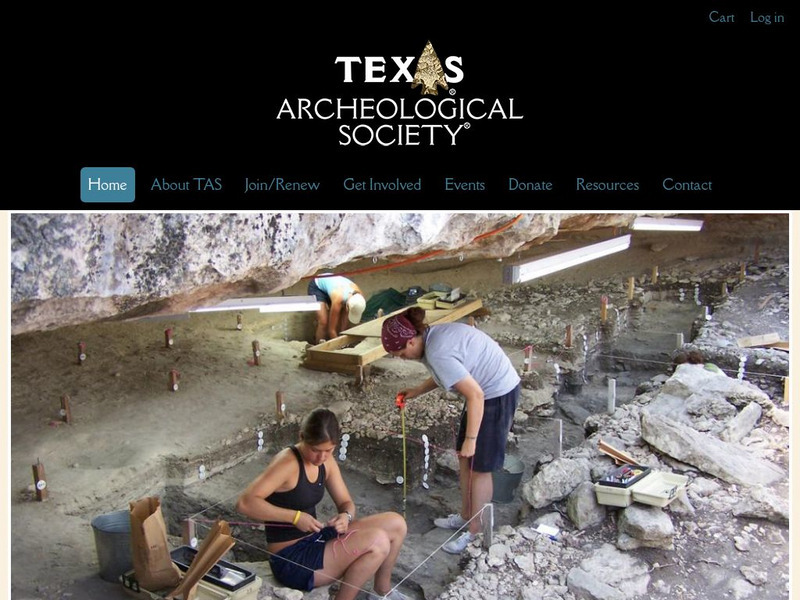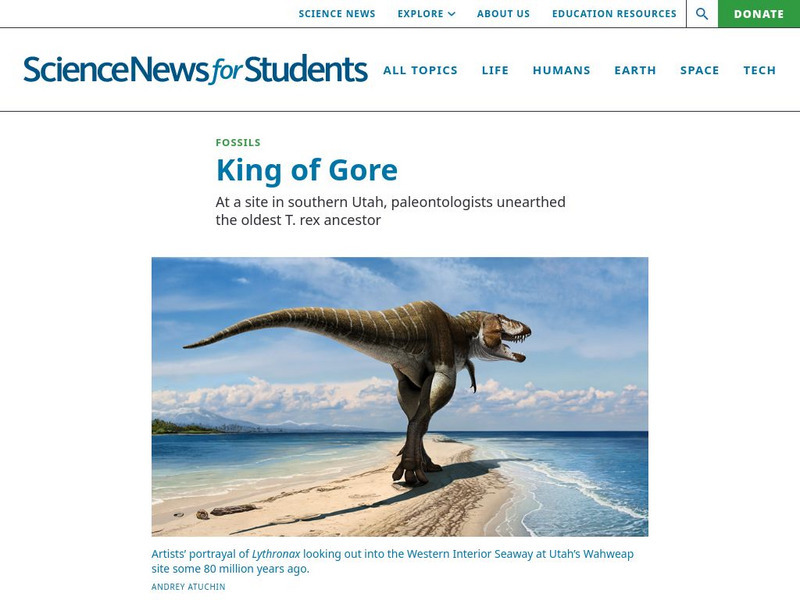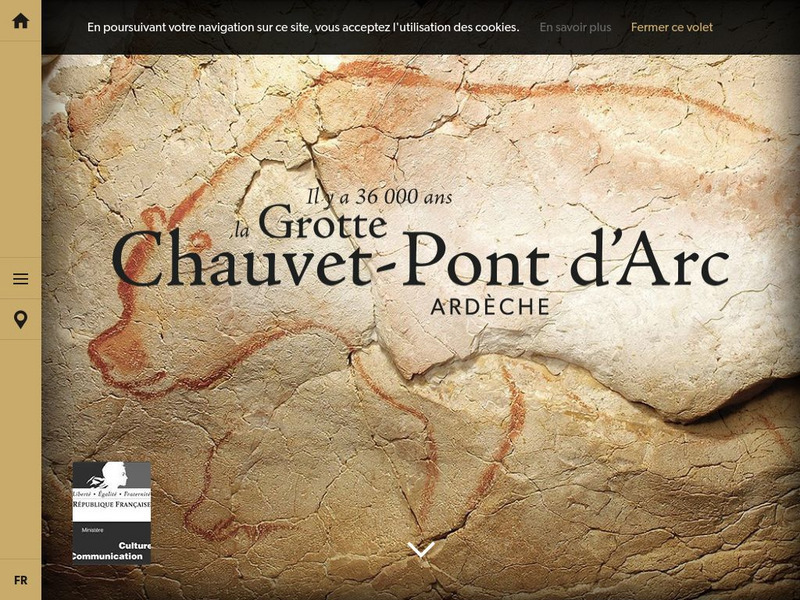Hi, what do you want to do?
University of Wisconsin
The Why Files: Science Behind the News
The Why? Files from the University of Wisconsin explains the science behind the news. The website, tackling issues in news headlines, provides a good mix of information and interactivity that takes the "chore" out of learning.
Science Buddies
Science Buddies: Lichenometry: An Accessible Method for Dating Recent History
Geology and archeology are examples of historical sciences. Their practitioners rely on multiple methods for establishing dates and temporal sequences as they seek to construct a history from the available evidence. This project will...
Other
The Texas Archeological Society
A superb resource for teachers of social and natural sciences, as well as for parents and youth. Links take you to educational sites that explain the "acheological process and discovery," to lesson plans on fitting archeology into the...
Curated OER
National Park Service: Science in Yellowstone National Park
Yellowstone National Park was established in 1872 and "is one of the last, nearly intact, natural ecosystems in the temperate zone of Earth. The Science Learning Centre provides information on numerous topics that include; biological and...
Society for Science and the Public
Science News for Students: King of Gore
Article reports on the recent discovery of Lythronax argestes, an ancestor to the Tyrannosaurus rex. Includes a list of vocabulary words.
Other
Overview of History, Culture, and Science: Croatian Art
An extensive overview of the art and architecture of Croatia. Includes biographical sketches of the artists as well as links to more information.
Other
Aaas Science Now: 3 17 14: 'Little Foot' Fossil Could Be Human Ancestor
Read about research being done to determine the age of the fossil called "Little Foot," an almost complete skeleton found in South Africa. "Little Foot" may prove to be an ancestor of humans, if some researchers are right about the age...
PBS
Pbs Teachers: Scientific American: Science Safari: The First People
Emulate the work of archaeologists in South Africa attempting to solve the riddles of human evolution by inferring a person's height from the length of one bone. Identify and communicate present-day rituals through ancient art techniques.
PBS
Pbs: Scientific American Frontiers: Unearthing Secret America
The fun part of history is finding the clues that unlock the secrets of the past. This is the companion site to the TV show with Alan Alda that features archeological discoveries. Students will find interesting lessons from the past on...
Other
The Cave of Chauvet Pont D'arc
This is a site about the discoveries that have been made at Chauvet-Pont-d'Arc in France. These cave paintings are thought to be about 31,000 years old. The site shows photos of the artwork and provides plenty of information about the...
Other
Odyssey of the Mind: Digging for Clues
Students explore archeology, dating methods, and the skills and technology needed to be an archeologist through the three activities provided. Activities require research of a historical period, class discussion and creative thinking.
PBS
Pbs Teachers: Scientific American: Science Safari: City of Gold
Investigate the challenges facing archeologists when dealing with local cultures near dig sites, and consider the difficulty of remaining sensitive to the past yet still being able to learn from it.
New York Times
New York Times: Gateway to Antiquity: Archaeological Renovation at Abydos, Egypt
The New York Times presents a slidshow with audio description featuring a description of Abydos in Egypt.
Curated OER
British Archeologist Dorothy Annie Elizabeth ("Daisy") Garrod (1892 1968)
Unidentified man; British archeologist Dorothy Annie Elizabeth ("Daisy") Garrod (1892-1968); and unidentified man. Garrod was the first woman to do research on Paleolithic humans, first woman to hold a professorship at Cambridge...


















